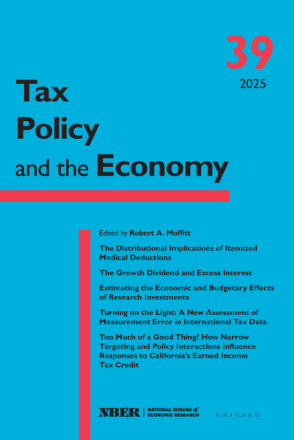The Distributional Implications of Itemized Medical Deductions

You may be able to download this chapter for free via the Document Object Identifier.
The itemized medical deduction (IMD) allows taxpayers to deduct out-of-pocket medical spending that exceeds a certain percentage of their income if they choose to itemize. Approximately $76 billion in out-of-pocket medical spending was deducted as an IMD in 2021, resulting in about $9 billion in federal forgone tax revenue. We use data from US tax returns to examine how these tax savings are distributed across income and age, how the distributions differ from the mortgage interest deduction, and how the distributions changed with the 2017 Tax Cuts and Jobs Act. While eligible medical spending above the income threshold is higher for lower-income households, itemization rates and marginal tax rates increase with income, resulting in tax savings skewed towards higher-income taxpayers: 94 percent of the tax savings accrue to those in the top half of the income distribution. The tax savings are also highly concentrated at older ages, with 42 percent accruing to those over age 65. Using rich survey data on out-of-pocket medical spending, we illustrate how the distribution of tax savings varies across policy alternatives. We find that raising the income threshold or changing the structure of the tax subsidy to an “above-the-line” deduction that does not require itemization or budget-neutral non-refundable or refundable credits reduces the concentration of tax savings at higher incomes and increases the concentration of tax benefits at older ages.
-
Copy CitationGopi Shah Goda, Ithai Lurie, Priyanka Parikh, and Chelsea Swete, Tax Policy and the Economy, Volume 39 (University of Chicago Press, 2024), chap. 1, https://www.nber.org/books-and-chapters/tax-policy-and-economy-volume-39/distributional-implications-itemized-medical-deductions.Download Citation


